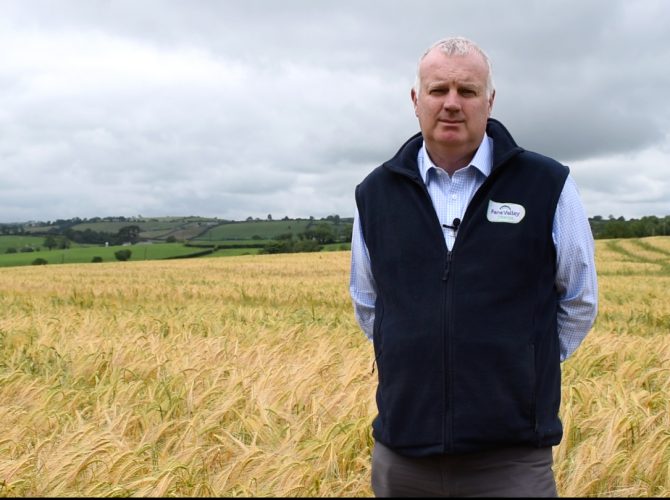Growing grain for wholecrop.
17th March 2022

Cereals are grown widely Northern Ireland with different land types and areas capable of cereal production. While your farm may not have the setup for combining and storing grain, to feed in the traditional sense, if you are currently making grass silage, then you can produce whole-crop silage from cereals for feeding to cattle.
As a forage whole-crop is an excellent all-round feed for livestock, providing a unique balance of energy, protein (from the grain), and digestible fibre (from the straw) as a silage. Whole-crop is very flexible and provides a valuable alternative and additional source of home-grown forage to complement grass or maize silage, helping to reduce reliance on purchased feed.
Whole-crop silage is very rumen friendly, due to the nature of the fibre and how it is digested within the rumen, helping to balance ‘fast energy’ from high D value grass silage and concentrate feeding. Whole-crop will provide a cost-effective, high-quality forage of consistent quality and palatability, with yields in the region of 10-14T per acre. At harvest dry matter should be in the range of 28-40%, Protein in the range of 9-15% and starch ranging from 15-30%, depending on the crop mixture and stage at harvest.
Whole-crop mixtures add a legume to the cereal, raising protein and fixing nitrogen in the soil reducing the requirement for fertiliser nitrogen. Mixtures include a cereal such as wheat, barley, oats, or triticale, and add a legume crop such as peas or lupins. The cereal provides the energy in the form of starch and the legume provides protein.
In terms of nitrogen, cereal whole-crop has a high nitrogen use efficiency requiring less nitrogen per tonne of silage than grass silage. A Standard whole-crop such as wheat or barley requires around half the nitrogen per tonne of dry matter production than required for grass silage, a cereal protein mixture requires even less, as little as a quarter of the nitrogen per tonne of dry matter production required for grass silage. Considering the soaring prices of fertiliser this is a good option for reducing the reliance on purchased nitrogen.
At Fane Valley we stock a range of cereal varieties suitable for whole-cropping and we also pre pack mixtures containing barley and peas or triticale and lupins.
For further information on growing wholecrop please contact your Fane Valley Agronomy & Forage Sales Specialist or call the Agronomy & Forage office on 02892610485.

